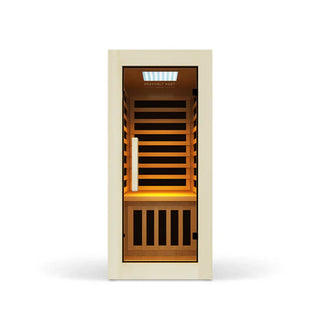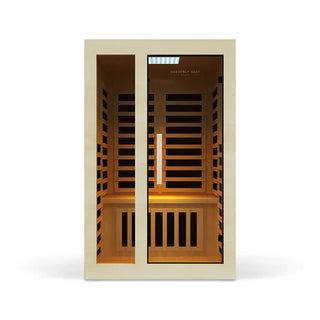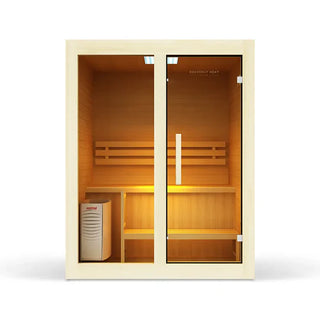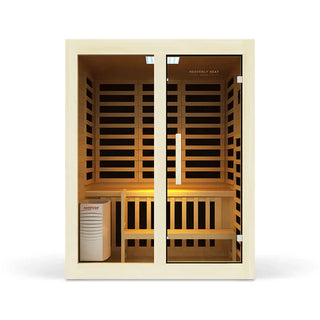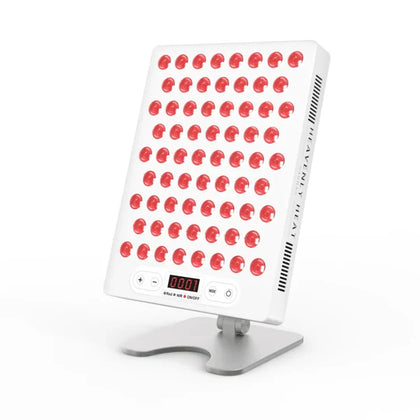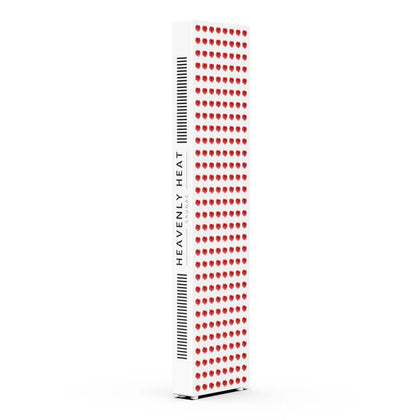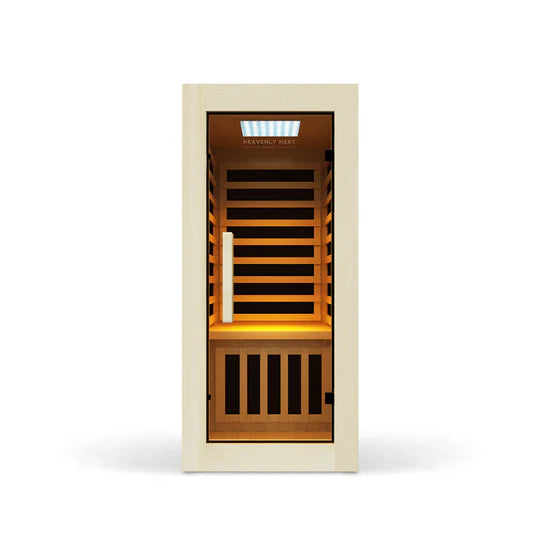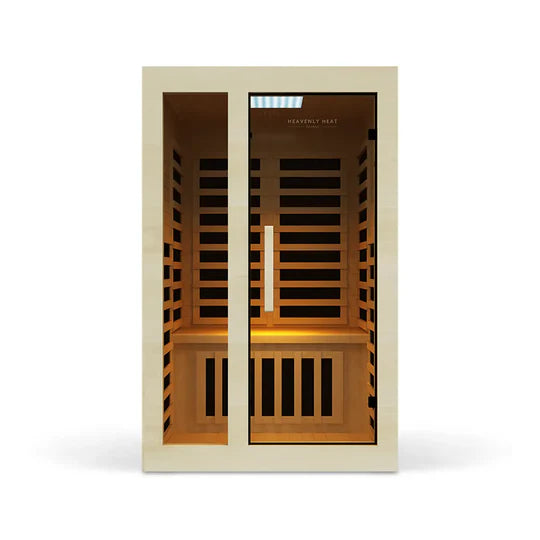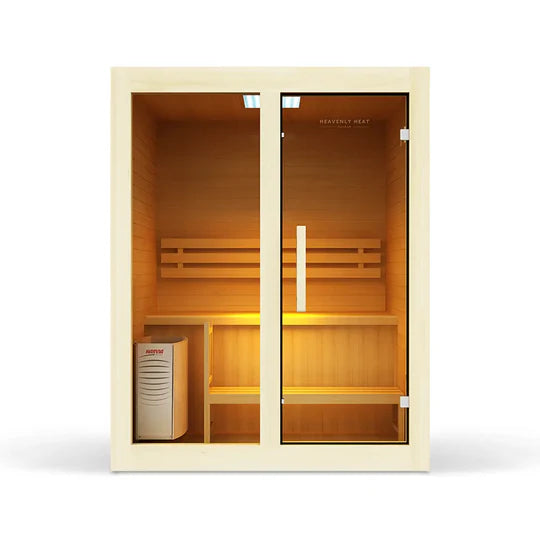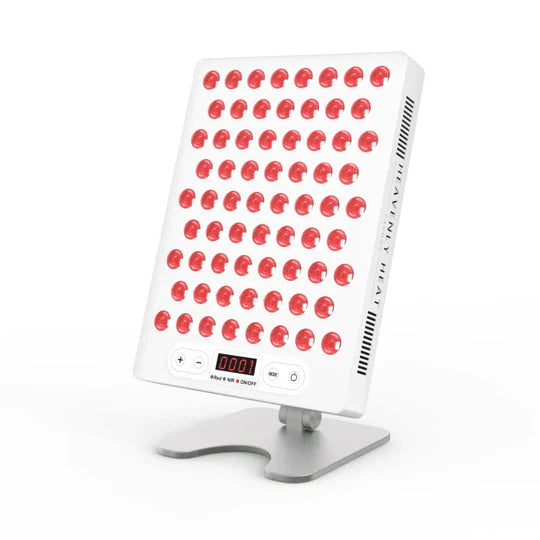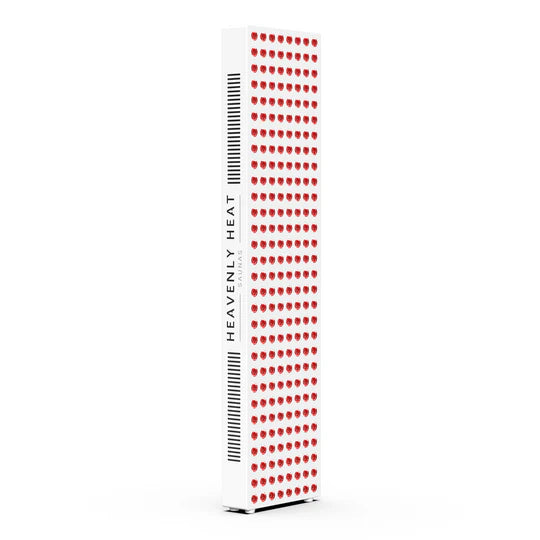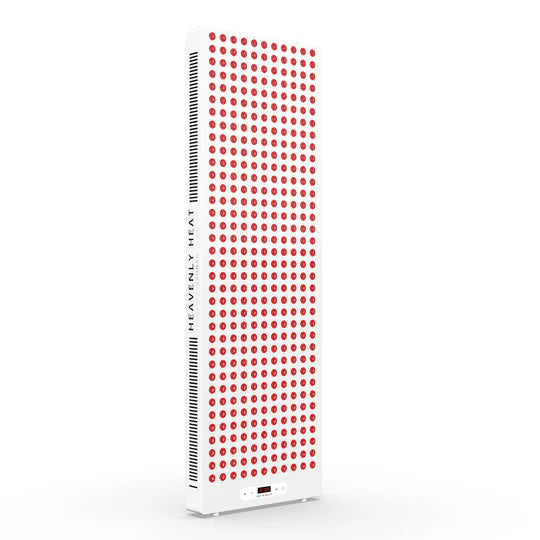Can You Do Red Light Therapy After Fillers?

After getting facial fillers, you may experience swelling, redness, bruising, or even pain.
These side effects can make it tough to enjoy your refreshed look immediately. But here's the catch: ignoring proper post-care could lead to longer recovery times or even complications.
So, can you safely use red light therapy after fillers? Keep reading to discover how it might help or hinder your healing process.
Key Takeaways
Wait 24–48 hours after dermal fillers before starting red light therapy for optimal healing.
Red light therapy can reduce swelling, bruising, and discomfort post-fillers by enhancing circulation.
Aim for 2–3 sessions per week, each lasting 10–20 minutes, to stimulate collagen production and speed up recovery.
Avoid using high-intensity light or treating injection sites directly in the first few days after fillers.
Pair red light therapy with gentle skincare products like hyaluronic acid to enhance results and soothe sensitive skin.
Understanding Dermal Fillers
- Key Materials in Dermal Fillers: Dermal fillers are made of various materials, including hyaluronic acid, calcium hydroxylapatite, and poly-L-lactic acid. These substances work to restore facial volume, smooth wrinkles, and enhance contours by injecting them beneath the skin.
- How Dermal Fillers Work for Facial Rejuvenation: Dermal fillers help plump up areas that have lost volume due to aging or other factors. The injected material boosts collagen production, improving skin volume and smoothing out wrinkles for a youthful appearance.
- Popular Types of Dermal Fillers: Hyaluronic acid-based fillers are widely popular for their natural feel and reversible effects, making them a common choice for many. Other fillers like poly-L-lactic acid and calcium hydroxylapatite offer additional benefits, including stimulating collagen over time or boosting long-term volume restoration.
- Potential Side Effects of Dermal Fillers: While dermal fillers are generally safe, side effects can occur. For example, poly-L-lactic acid may cause lumps or bumps under the skin, while calcium hydroxylapatite can lead to bruising or swelling. These side effects are typically temporary.
- Duration and Longevity of Dermal Fillers: Dermal fillers can last anywhere from six months to two years, depending on the type and the area treated. This variability is due to factors such as the filler material used and the location of the treatment on the face.
- Dermal Fillers vs. Botox: Key Differences: Unlike Botox , which relaxes muscles to smooth wrinkles, dermal fillers directly restore volume and fullness to the skin. While Botox works on muscle activity, dermal fillers focus on replenishing lost volume for a more youthful appearance.
- The Impact of Filler Dissolution Over Time: As dermal fillers gradually dissolve over time, the skin may return to its natural state, potentially causing a slight decrease in volume and elasticity. However, fillers don't cause long-term harm to the skin's structure.
Recommended Frequency and Duration of Sessions
- Start Red Light Therapy a Few Days After Fillers: You can begin using red light therapy just a few days after dermal fillers to support healing.
- Use Red Light Therapy 2-3 Times a Week: For effective recovery, aim for 2-3 sessions of red light therapy per week, allowing your skin time to heal between treatments.
- Sessions Should Last 10-20 Minutes: Keep each session between 10-20 minutes to ensure the light penetrates deeply without overstimulating the skin.
- Wait 48 Hours Between Sessions: Give your skin a rest by waiting at least 48 hours between each red light therapy session for the best results.
- Stick to 20-30 Minute Sessions: For optimal results, stick to 20-30 minute sessions with medical-grade equipment, 2-3 times a week.
Benefits of Using Red Light Therapy After Dermal Fillers
Reduction of Swelling and Inflammation After Dermal Fillers
- Red Light Therapy Reduces Swelling After Fillers: "I incorporate Red Light Therapy into my practice post Botox or Filler injections to minimize the risk of swelling and inflammation," says Dr. Daniel J Gould , a renowned specialist in aesthetic medicine.
- Improved Circulation Reduces Inflammation: Red Light Therapy promotes blood circulation, speeding up the healing process and helping to reduce inflammation more efficiently after dermal fillers.
Acceleration of the Healing Process Following Dermal Filler Treatment
- Red Light Therapy Improves Circulation for Faster Healing: Red light therapy speeds up healing by improving circulation and oxygen flow to skin cells, helping the skin recover faster after dermal filler treatments.
- Stimulating Collagen Helps Skin Repair Quickly: By boosting collagen production, red light therapy supports faster skin surface repair, speeding up the healing process after dermal filler procedures.
- Studies Prove Red Light Therapy Speeds Up Healing: A clinical study showed that red light therapy helped the skin heal much faster, up to one-third of the time, compared to untreated areas, proving its effectiveness in promoting recovery.
- It Reduces Swelling, Bruising, and Redness: Red light therapy helps minimize common side effects like swelling, bruising, and redness after dermal filler treatments, speeding up the recovery process.

Minimization of Bruising and Discoloration Post-Treatment
- Red light therapy helps bruises fade faster after fillers: If bruising happens after dermal fillers, red light therapy boosts blood flow, helping your body clear the bruise quicker and reduce the downtime.
- It lowers your chances of bruising in the first plac: Using red light therapy before your filler appointment can strengthen your blood vessels and make your skin less likely to bruise.
- Regular sessions make bruises smaller and heal faster: With consistent use, red light therapy not only helps bruises go away faster but also makes them less intense when they do happen.
- Bruising is very common—especially as you age: More than half of healthy people bruise easily, and this gets worse with age, making red light therapy a smart add-on for smoother recovery.
Enhancement of Collagen Production to Support Skin Health
- Red light helps your skin make more collagen after fillers: Red light therapy tells your skin to start producing more collagen, the protein that keeps your skin firm and smooth. After getting dermal fillers, this boost in collagen supports and enhances the results.
- More collagen means your skin stays firmer and smoother: When collagen levels rise, your skin becomes stronger, tighter, and more elastic. This firmness helps your face look smoother and healthier, giving fillers a better surface to work with.
- Better collagen makes your fillers last longer: With healthier, more elastic skin, your fillers not only look better, they also last longer. Red light therapy helps maintain your skin’s strength, which means your filler results stay fresh for more time.
Improvement in Skin Texture and Tone After Dermal Fillers
- Red light helps your skin heal faster after fillers: Right after getting dermal fillers, your skin can feel tender or look slightly irritated. Red light therapy helps calm this down quickly, letting your skin bounce back faster and more smoothly.
- It reduces redness and blotches for a more even look: If your skin gets red or blotchy after injections, red light therapy can help settle that. It evens out your skin tone, so your face looks calmer and more balanced.
- It smooths out small bumps or uneven areas: Sometimes fillers can leave the skin looking a bit uneven. Red light encourages your skin to repair itself, making these little bumps and rough patches less noticeable over time.
- It keeps your skin hydrated and looking fresh: After a few weeks of using red light therapy, many people notice their skin feels more hydrated and looks fresher. This extra moisture helps your face look softer and more glowing.
- It slowly brings back your skin’s natural bounce: Red light therapy boosts collagen, which gives your skin that healthy, plump look. With regular use, your skin can start to look fuller and more youthful without any extra treatments.
Decreased Tenderness and Discomfort During the Recovery Period
After dermal fillers, tenderness and discomfort can occur, but red light therapy can significantly alleviate these symptoms.
The therapy works by enhancing circulation, which helps reduce soreness and inflammation in the skin.
It also accelerates the healing process, leading to less pain and tenderness over time.
Increase in the Longevity of Dermal Filler Results
- Red light helps your skin hold fillers in place longer: Red light therapy boosts collagen production, which gives your skin structure and firmness. This added support helps the dermal fillers stay in position for a longer time, keeping your results looking fresh and natural.
- It slows down how fast your body breaks down the filler: Red light therapy may reduce how quickly filler ingredients like hyaluronic acid or calcium hydroxylapatite dissolve in your skin. This slow-down means fewer touch-ups and longer-lasting smoothness and volume.
Understanding the Potential Risks and Limitations of Red Light Therapy After Dermal Fillers
- Filler Migration and Uneven Results Can Happen: Red light therapy can cause dermal fillers to shift from their original position, leading to puffiness or uneven skin.
- Skin Conditions and Sensitivity Should Be Considered: People with certain skin conditions or sensitive areas need to be cautious when using red light therapy after dermal fillers.
- Post-Treatment Care Can Help Avoid Discomfort: After treatment, using a soothing cream can help keep the skin hydrated and reduce any irritation or discomfort.
- Small Risk of Scar Tissue Formation: Though rare, combining red light therapy with dermal fillers could lead to scar tissue formation in some cases.
- Always Seek Professional Guidance: It’s important to consult with a professional to follow the right guidelines on when and how to use red light therapy after dermal fillers.
When is the Right Time to Start Red Light Therapy After Dermal Fillers?
- Wait 3 to 5 Days for Better Results: It’s generally safe to start red light therapy 24 to 48 hours after dermal fillers, but waiting 3 to 5 days ensures better results.
- Allow Time for Swelling and Bruising to Reduce: Waiting a few days helps reduce swelling and bruising, leading to better therapy outcomes.
- Starting Too Soon Can Interfere with Healing: Starting red light therapy too early might interfere with the healing process and cause problems with recovery.
Tips for Creating a Post-Filler Red Light Therapy Schedule
Wait at Least 48–72 Hours After Fillers
After getting fillers, it's best to wait at least 48–72 hours before starting red light therapy. This gives your skin time to heal and reduces the risk of irritation.

Start with Short Sessions (5–10 Minutes)
It’s always smart to begin red light therapy with short sessions of 5–10 minutes. Starting small helps your skin gradually adjust to the therapy, reducing the chances of irritation or redness.
The duration can vary depending on the area you're treating, superficial areas like the face may need shorter sessions, while deeper tissues, like muscles, may benefit from slightly longer sessions to ensure the best results.
Use Low to Moderate Light Intensity
High intensity could be too harsh for skin that’s still healing. Lower intensities are gentle yet effective, helping to promote blood circulation and collagen production without overloading your skin.
Intense light exposure or high-energy treatments too soon after filler injections may interfere with the healing process and even affect the filler’s stability, as some studies suggest.
By opting for lower light levels, you help protect both the skin and the filler, ensuring a smoother recovery.
Aim for 2–3 Sessions Per Week
For optimal results, aim for 2–3 red light therapy sessions per week. This frequency helps stimulate collagen production and enhances healing without overwhelming your skin.
Avoid Treating the Injection Site Directly at First
Right after getting fillers, avoid treating the injection site directly with red light therapy.
The injection site can be tender and inflamed, so applying red light therapy too soon might cause irritation or worsen the swelling.
Monitor for Any Unusual Reactions
Always keep an eye on your skin after using red light therapy. If you notice irritation, redness, or any unusual reactions, it’s essential to stop and assess the situation.
Combine with Gentle Skincare Products
To maximize the benefits of red light therapy, pair it with gentle skincare products.
Post-filler skin can be sensitive, and using harsh products might irritate or disrupt healing.
Gentle skincare, especially those with soothing ingredients like aloe vera or hyaluronic acid, can enhance the effects of red light therapy.

Who Should Avoid Red Light Therapy After Dermal Fillers?
- Avoid Red Light Therapy with Active Skin Infections or Severe Acne: If you have active skin infections or severe acne, avoid red light therapy until your skin has healed. These conditions can make things worse and interfere with the therapy's effectiveness.
- Pregnant Women Should Skip Red Light Therapy: Pregnant women should avoid red light therapy after dermal fillers. It’s better to stay cautious and avoid unnecessary treatments during pregnancy for safety.
- Consult Your Doctor if You Have Autoimmune Conditions: If you have an autoimmune condition, it’s important to talk to your doctor before using red light therapy. It might interfere with your treatment plan, so always get professional advice first.
Safe Post-Filler Treatments to Combine with Red Light Therapy
Hyaluronic Acid Serums
- Hyaluronic acid keeps your skin moist and calm after fillers: Hyaluronic acid serums are great for calming and hydrating the skin once you’ve had dermal fillers. They pull in moisture and help your skin look fuller and fresher right after the treatment.
- It’s best not to use other creams, but hyaluronic acid is safe after treatment: Most serums or creams should be avoided right after fillers, but hyaluronic acid is gentle and actually helps your skin heal better when used afterward.
Peptide Serums
- Peptide serums help your skin heal faster after fillers: Peptides are a great choice after getting dermal fillers because they help the skin recover quickly and gently.
- Using red light with peptides makes the results even better: When you combine peptide serums with red light therapy, they work together to boost healing and give faster, more visible improvements.
- Peptides keep your skin firm and full of bounce: These serums increase collagen in your skin, which helps it stay tight, elastic, and youthful.
- Regular use of peptides smooths wrinkles and fine lines: Peptides help reduce signs of aging by smoothing out the skin and keeping your face looking fresh and young.
Aloe Vera Gel
- Aloe Vera Gel is a safe choice to calm the skin after fillers: Aloe Vera gel is well-known for its soothing properties, making it a popular choice for calming the skin after dermal fillers. It helps reduce swelling and inflammation , providing relief during the immediate post-treatment phase.
- It’s gentle enough for all skin types without causing irritation: Not only is Aloe Vera safe for all skin types, but it also avoids irritation. It doesn’t contain harsh ingredients like alcohol or strong fragrances, which can trigger reactions in sensitive skin.
Niacinamide (Vitamin B3) Productsautoimmune conditions
- Niacinamide helps calm the skin after filler treatments: Niacinamide reduces redness and irritation, which makes it a good choice for soothing your skin after getting dermal fillers. It’s especially useful if your skin feels sensitive or inflamed after the procedure.
- Using red light therapy with niacinamide speeds up skin healing: When niacinamide is used along with red light therapy, it boosts collagen and helps your skin heal faster. This combo works well to refresh your skin after fillers.
- Niacinamide supports the skin’s natural repair process: This vitamin helps your skin deal with stress and repair damaged cells. That’s why it’s useful for recovery after fillers, it strengthens your skin from the inside.
- It’s safe for most people but always check with a skin expert: Niacinamide usually works well with fillers and adds an extra layer of care. But if you have sensitive skin or a specific filler type, it’s smart to ask your dermatologist before using it to avoid any problems.
LED Masks
- LED masks help your skin recover after fillers: LED masks gently support the skin by reducing swelling, bruising, and redness after getting dermal fillers. They also boost collagen, which helps your skin heal faster and look better.
- Don’t use an LED mask right after your filler treatment: Using an LED mask too soon can cause problems like filler movement or irritation. It’s safer to wait about two to four weeks so your skin can fully settle first.
- Using LED masks too often can irritate your skin: It might seem like using the mask daily would work faster, but it can actually do more harm than good. A few sessions each week are enough to get great results without annoying your skin.
- LED masks keep your skin glowing after it heals: Once your skin has healed from the filler, LED masks help you maintain smooth, glowing skin. They support long-term skin health and make your results last longer.

Professional vs. At-Home Red Light Therapy Devices: Which is Best for Enhancing Results After Dermal Fillers?
- Professional machines work faster because they’re stronger: Professional red light therapy devices have more power, which helps them reach deeper into the skin. This means they can boost collagen production and improve the effects of dermal fillers more quickly than home devices.
- Home devices are gentler and need more time to show results: At-home red light therapy tools are easier to use daily, but they aren’t as strong. You’ll need to use them regularly for several weeks to notice any real difference in your skin after fillers.
- Using both types can give better and longer-lasting results: Professional treatments give faster results, but home devices are great for keeping those results going. They also help reduce swelling and bruising after fillers, making your skin heal better.
Can You Do Cryotherapy After Fillers?
Dermal fillers smooth lines and add volume to the face. After getting fillers, wait at least three months before cryotherapy to avoid swelling, bruising, or shifting the filler.
Can You Do Sauna Sessions After Fillers?
Avoid saunas, steam rooms, hot tubs, and sun exposure for at least 24 hours after getting fillers. Heat can expand blood vessels, increasing swelling and bruising, and may break down the hyaluronic acid in the fillers, reducing their effectiveness.
Can You Do Exercise After Fillers?
After getting facial fillers, it's best to wait 24 to 48 hours before exercising. Once that time has passed, stick to light, low-impact activities like walking.
Avoid high-intensity workouts or exercises that raise your heart rate or involve bending over, as these can affect your results.
FAQs
Can Red Light Therapy Enhance the Effectiveness of Dermal Fillers in the Long Term?
Red light therapy can enhance the effectiveness of dermal fillers by promoting collagen production, which helps maintain filler results and supports skin elasticity. It slows down the breakdown of fillers, making them last longer, and restores skin firmness, especially in areas where fillers degrade faster. This improves skin texture and helps keep the filler looking natural over time.
Are There Specific Skin Types That Benefit More from Red Light Therapy After Dermal Fillers?
Red light therapy offers unique benefits for various skin types after dermal fillers. For oily skin, the therapy helps regulate oil production, reduce inflammation, and speed up recovery, making it highly effective. On the other hand, dry skin can also benefit, as red light therapy promotes hydration and boosts collagen production, enhancing overall skin texture. For aging skin, red light therapy can enhance collagen synthesis, reduce the appearance of fine lines and wrinkles, and improve skin elasticity, leading to a rejuvenated appearance.
Can Red Light Therapy Be Used Immediately After Dermal Fillers to Reduce the Risk of Side Effects?
After dermal fillers, it's important to wait 24 to 48 hours before using red light therapy. This allows the skin to settle and reduces the risk of irritation. Red light therapy can help speed up healing by promoting circulation, reducing swelling, and stimulating skin regeneration, which may also lower the risk of infections. Always follow the recommended waiting period for optimal results and safety.
What Should I Avoid Doing After Dermal Fillers When Using Red Light Therapy?
After getting dermal fillers, avoid intense exercise, excessive heat (like hot showers or saunas), and makeup for at least 24-48 hours. Red light therapy won’t cause swelling, but if swelling is present from the fillers, wait until it subsides. While red light therapy can reduce inflammation, it’s best to wait before using it on sensitive areas.


